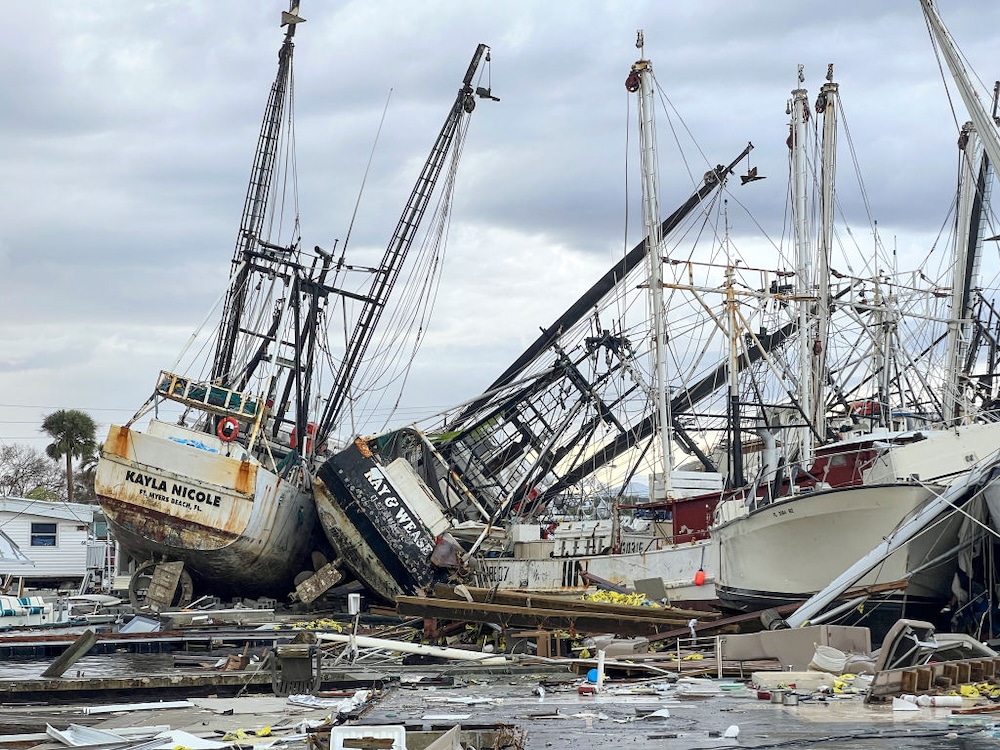This post was originally published on Eco Watch
According to a new analysis by Swiss Re Institute, insured natural catastrophe losses globally could reach $145 billion this year, primarily driven by “secondary perils” such as floods, wildfires and severe thunderstorms.
This follows a five to seven percent long-term annual growth trend, the institute said.
The report, Natural catastrophes: insured losses on trend to USD 145 billion in 2025, said “primary perils” such as earthquakes and hurricanes pose the biggest risks, potentially pushing insured losses to $300 billion-plus during a peak year.
“2025 started with wildfires in Los Angeles, causing an estimated USD 40 billion in insured losses. While these losses from a secondary peril are substantial, primary perils remain the biggest threat: when a severe hurricane or strong earthquake hits a densely populated urban area, insured losses in that year could be more than double the long-term loss trend,” a press release from Swiss Re Institute said.
The last peak year was in 2017, driven by Hurricanes Irma, Harvey and Maria. The institute said peak years caused by a few “primary-peril events” or an accumulation of those and “secondary-peril events,” should not be viewed as an anomaly.
Since 2017, underlying risks have grown consistently, along with population growth, economic expansion and urban sprawl, including in places vulnerable to natural catastrophes. The effects of climate change are also playing a part in compounding losses for certain weather perils and regions.
“Our recent analysis of over 200 in-house models and the loss trend over the last 30 years show what is at stake: When a severe hurricane or a major earthquake hits an urban area in a country with significant insurance take-up, insured losses could easily reach USD 300 billion in that year,” said Balz Grollimund, head of catastrophe perils at Swiss Re, in the press release.
Estimates by the institute have found that some early 20th century hurricanes would result in losses of more than $100 billion if they struck today. Hurricane Andrew, for example, caused $35 billion in losses to those insured in 1992. Today, a hurricane on the same path would result in nearly three times the losses because of economic and population growth, as well as urban sprawl.
“Meanwhile, Hurricane Katrina, the costliest single insured loss event for the re/insurance industry ever, would not cause the same destruction as 20 years ago. Insured losses would still reach around USD 100 billion due to rising housing and construction costs, but improved flood defences and a 20% decrease in local population along Katrina’s path have significantly reduced exposure,” the press release said.
Although the severity of losses has been increasing globally, the United States accounted for nearly 80 percent of the world’s insured losses last year because of its vulnerability to severe hurricanes, earthquakes, wildfires, thunderstorms and floods.
There are many factors that inform insurance premium rates, including inflation and local regulations. But across geographies over the long-term, the primary factor in determining the cost of premium rates and claims is the exposure to natural perils.
This is apparent in states like Texas, Florida, California, Colorado and Louisiana, which make up roughly half of all U.S. natural catastrophe losses. With its high hurricane-related losses, Florida’s per-household premiums are twice the national average. Meanwhile, the highest premiums in California are in areas that have the most exposure to wildfire risk.
“Close collaboration between the public and private sectors is vital for effective protection measures to reduce losses. In addition, a well-capitalised reinsurance sector, backed by USD 500 billion in capital, acts as a vital shock absorber, helping communities and economies recover more quickly. That is why it is important that capital grows in line with rising risk, for the industry to fulfil their role for future peak years,” said Jérôme Haegeli, group chief economist at Swiss Re.
Last year, insurance losses due to natural catastrophes worldwide climbed to $137 billion, driven by major floods and wildfires worldwide; Hurricanes Milton and Helene; and severe thunderstorms in the U.S.
“As natural catastrophe losses continue to rise, it is crucial to reduce loss potential from the outset, both to reduce the cost of insurance and to maintain the viability of risk transfer business. For example, severe storms can overwhelm local protection systems and cause flooding, and while mitigation measures come at a price, a recent Swiss Re Institute study shows that flood protection through dykes, dams and flood gates is up to ten times more cost-effective than rebuilding after a disaster,” the press release said.
The post 2025 Climate Disaster Costs Could Reach $145 Billion Globally: Analysis appeared first on EcoWatch.





0 Comments